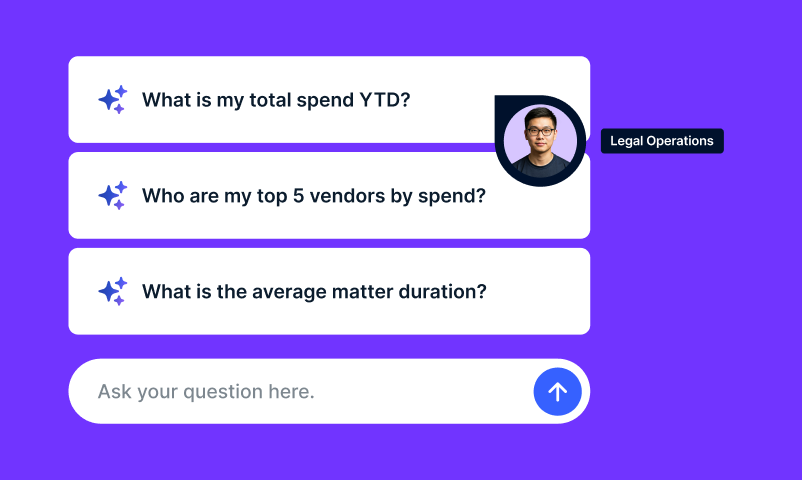
When it comes to legal spend, corporate legal departments share a unanimous thought: It’s time to control costs. A recent survey from Gartner showed that the proportion for legal spend for outside counsel has decreased from 50% to 44% since 2018 – a trend predicted to evolve further as the effects of the pandemic influence companies’ priorities.
Before you can right-size legal spend, you have to understand how you’re spending. That’s where an enterprise legal management solution (ELM) comes in. Comprised of legal spend management and matter management, modern ELM solutions no longer land in the “nice to have” category. GCs and legal operations professionals are quickly outgrowing (and getting more and more frustrated with) dated ELM systems with non-intuitive interfaces and limited functionality that cannot meet their business needs.
Six Must-Have Enterprise Legal Management Features You Need Now
ELM solutions give users the tools to analyze legal spend, manage matters, minimize company risk and drive process efficiency, giving legal operations managers the ability to reduce legal spend with surgical precision.
The leading ELM solutions offer several crucial features (outlined here) that can help control costs and increase efficiency – an overall win on multiple fronts. However, here are six additional legal spend management and matter management features to consider when evaluating ELM options.
- Flexible Workflow
Corporate legal departments need flexible enough workflows to match business requirements. The workflows also need to be simple enough to manage or change without IT personnel reliance. Different work types, such as matters related to employment, litigation, or mergers, can have their unique workflows. Likewise, workflows change based on participants or collaboration with other departments such as sales, procurement and marketing.
- Timekeeper Management
Corporate legal departments need the ability to keep track of authorized timekeepers and rates and do it in one solution. This informs not only legal spend but other essential initiatives such as diversity. (For an example of using technology to drive diversity and inclusion, visit Hack the House and select “Team Diversity” for a demo. They created and deployed an app in less than three weeks.)
- Billing Guidelines
When a corporate legal department’s outside counsel spend reaches beyond $100 million, the number, size and amounts of legal bills go beyond manual processing capabilities. Submitted invoices may contain charges that do not comply with billing guidelines. ELM will enforce billing guidelines, automatically flagging or denying payment for suspect charges and supporting legal spend managment.
- Reporting and Analytics
When it comes to having insight into reporting, a leading ELM solution will provide you with a dashboard view that makes it easy to analyze invoices, evaluate performance and see trends in matter portfolios, which are vital for understanding and controlling legal spend.
- Advanced Security
Each day, news breaks of security breaches. Corporate legal and the law firms they work with are now prime candidates for hacking attempts. Industry-standard security and bank-level encryption ensure billing and matter data remains confidential. A three-pronged approach is optimal: custom-hardened Unix kernels, managed virtual private cloud and continuous firewall monitoring.
- Outlook Integration
For years, there has been one cry that continually arises when it comes to technology and communications: Email is dead! However, it remains a highly used tool for knowledge workers such as lawyers and operations professionals. Synchronizing matter information between Outlook and associated matters is a quick way to ensure your ELM information remains up-to-date and eliminates duplicative, manual work.
For more ELM and legal spend inspiration, take a look at the following resources:
- Hear this debate between legal professionals on the best ways to reduce legal spend. Is it bring more work in-house, leverage ALSPs or renegotiate terms with outside counsel? You’ll find out when you listen.
- Find out how to reduce your legal spend annually by 5-10 percent.











